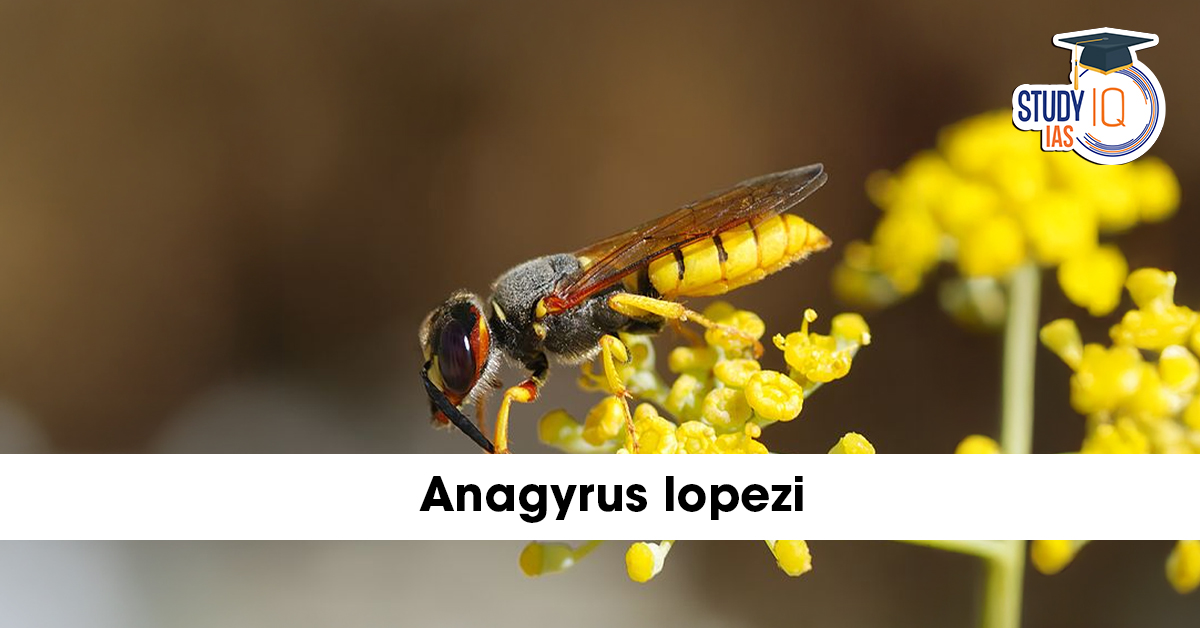Table of Contents
In a remarkable example of eco-friendly pest control, a tiny parasitic wasp named Anagyrus lopezi has brought South India’s tapioca (cassava) crops back from the brink of collapse.
What seemed like an unstoppable pest invasion in 2020 has now turned into a success story of biological control, thanks to the efforts of scientists from ICAR–National Bureau of Agricultural Insect Resources (NBAIR), Bengaluru.
This achievement highlights how science, sustainability, and nature can work together to solve agricultural crises — without the use of harmful chemicals.
The Crisis: Cassava Mealybug Infestation
-
In April 2020, farmers in Thrissur, Kerala, noticed severe damage to their tapioca crops, caused by the cassava mealybug (Phenacoccus manihoti) — an invasive pest originally from Africa.
-
The pest spread rapidly across Tamil Nadu, Kerala, and Puducherry, affecting 1.43 lakh hectares of farmland by 2021.
-
Yields plummeted from 35 tonnes per hectare to just 5–12 tonnes, threatening livelihoods and India’s ₹200 million tapioca export industry.
The mealybug fed on plant sap, leading to:
-
Leaf curling
-
Stunted growth
-
Poor tuber formation
With no natural predators in India, the outbreak spiraled into an agricultural disaster.
The Solution: Anagyrus lopezi to the Rescue
Instead of relying on chemical pesticides, which are costly and environmentally damaging, ICAR–NBAIR scientists used classical biological control — introducing a pest’s natural enemy from its native ecosystem.
What is Anagyrus lopezi?
-
A tiny parasitic wasp species originally found in Africa.
-
It specifically targets the cassava mealybug, leaving other insects unharmed.
-
The female wasp lays eggs inside the mealybug, and the developing larvae consume the pest from within, killing it naturally.
This method is self-sustaining — once introduced, the wasp continues to control mealybug populations without further human intervention.
The Remarkable Recovery
Within two years of the wasp’s release in South India’s tapioca fields, results were dramatic:
-
Infested areas in Salem, Namakkal, and Dharmapuri (Tamil Nadu) rebounded to 35 tonnes per hectare — back to pre-outbreak levels.
-
Farmers’ income and confidence were restored.
-
The need for chemical pesticides dropped significantly, reducing both costs and environmental impact.
Dr. S. N. Sushil, Director of ICAR–NBAIR, said:
“Every pest has a natural enemy in nature. By restoring that balance, we protect crops without harming the environment.”
Why Anagyrus lopezi Matters
Eco-friendly Pest Control
No toxic residues, no harm to soil, water, or pollinators.
Cost-effective for Farmers
Reduces dependency on expensive pesticides and repeated spraying.
Sustainable Agriculture
Provides long-term pest suppression through natural predation.
Biodiversity Protection
Supports healthy farm ecosystems by maintaining natural predator-prey balance.
ICAR–NBAIR’s Role
The National Bureau of Agricultural Insect Resources (NBAIR), under ICAR, specializes in using beneficial insects to protect crops.
Their scientists studied the pest, sourced the wasp, tested it for ecological safety, and carefully released it across affected regions.
The project demonstrates India’s growing expertise in biological pest management — a critical step toward climate-resilient and sustainable agriculture.
Cassava Production in India (Before and After Wasp Release)
| Year | Average Yield (tonnes/ha) | Key Events |
|---|---|---|
| 2019 | 35 | Stable production |
| 2020 | 25 | Mealybug detected in Kerala |
| 2021 | 5–12 | Severe infestation |
| 2023 | 30 | Wasp release takes effect |
| 2025 | 35 | Full recovery achieved |
Global Context
This isn’t the first time Anagyrus lopezi has saved a nation’s cassava crop:
-
In Africa, it rescued cassava production in 20+ countries during the 1980s, protecting millions from food insecurity.
-
Now, India joins that success story, proving the universal value of biological control programs.
Conclusion
The story of Anagyrus lopezi is more than just a tale of pest control — it’s a symbol of hope and sustainability.
By trusting nature’s own mechanisms, Indian scientists have shown that eco-friendly solutions can safeguard both food security and the environment.
From ruin to recovery, this parasitic wasp has proven that sometimes, the smallest creatures make the biggest impact.


 UNEP Champions of the Earth Award: UN's ...
UNEP Champions of the Earth Award: UN's ...
 Shilp Didi Programme: Empowering Women A...
Shilp Didi Programme: Empowering Women A...
 Is the Falling Rupee a Cause for Alarm?
Is the Falling Rupee a Cause for Alarm?

























